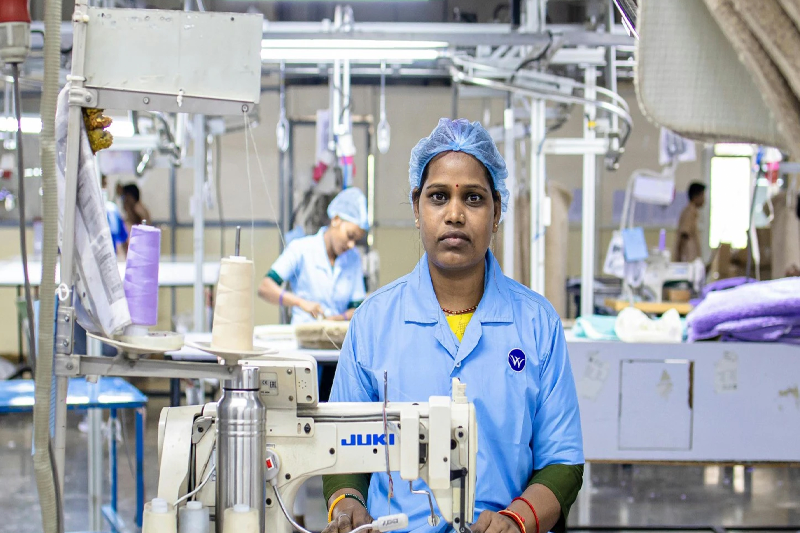
Jharkhand Leads in Skill Training Enrolment; Gender Pay Gaps Persist Despite Rising Female Employment
India's efforts to boost youth employability have made significant strides, particularly through the Skill Impact Bond (SIB). Launched in 2021 by the Ministry of Skill Development and Entrepreneurship (MSDE), National Skill Development Corporation (NSDC), and a coalition of international funders, the initiative has made substantial progress in targeting youth in vulnerable populations. However, as seen in the SIB 2025 report, while female participation and employment outcomes have risen, gender-based pay disparities remain a significant challenge. This blog post delves into the regional trends, gender dynamics, and employment outcomes revealed in the latest report.
Jharkhand Leads Skill Training Enrolments
According to the Skill Impact Bond's evaluation, Jharkhand has emerged as a leader, accounting for an impressive 27% of total enrolments across four evaluated cohorts. Other regions like Uttar Pradesh, Maharashtra, Odisha, and Telangana follow, with Uttar Pradesh contributing 9.1%, and Maharashtra at 8.7%. This reflects Jharkhand's significant role in India’s skilling ecosystem, highlighting regional contributions to the national push for skill development.
The trainees are predominantly unmarried, in their early 20s, and possess education levels around Class 10 or 12, setting a base for youth skilling among those with limited formal education.
Dominance of Female Enrolment and Regional Sector Trends
One of the most notable trends in the report is the dominance of female trainees, who represent over 70% of the total enrolments across all cohorts. Their primary focus has been the apparel sector, which has traditionally seen high female participation. However, female trainees are also gradually shifting towards sectors like IT-enabled services (ITeS), retail, and banking, financial services, and insurance (BFSI).
On the other hand, male trainees continue to dominate the construction and automotive sectors, though there has been a noticeable shift towards ITeS and retail sectors over time. Interestingly, male enrolment in the IT-ITeS sector has increased, signaling the changing landscape of skills development for men. However, male trainees in construction still hold the highest share in the sector.
Improved Employment Outcomes for Women
Female trainees have shown notable improvements in employment outcomes across the four evaluated cohorts. One of the most significant findings is the 92% certification rate for women by Cohort IV, a substantial increase over the earlier cohorts. Additionally, job placement rates for women have risen to 81%, showcasing a growing trend toward success in the labor market.
Retention rates, a critical indicator of job sustainability, also saw remarkable progress. By the fourth cohort, three-month job retention for women surged to 66%, matching the retention rate for male trainees. This indicates that women are not only getting jobs but are also sustaining them at comparable rates to their male counterparts.
In contrast, male employment saw a sharp decline from 68% in Cohort 1 to 34% in Cohort 4. This dip can be attributed to many male trainees opting for further studies after completing their training, which has affected their employment outcomes.
While female employment grew from 35% to 48%, an interesting trend emerged where self-employment among women increased from 6% to 14%, especially among those trained as sewing machine operators. This suggests a rising entrepreneurial spirit among female trainees, an important sign of independence and empowerment.
Gender Pay Disparities Remain Despite Progress
While the gender gap in placement and retention rates has been narrowing, gender-based pay disparities remain a significant challenge. Despite high rates of skill acquisition and workplace retention among both men and women, male trainees continue to earn higher salaries.
According to the report, male median monthly salaries ranged from Rs 12,400 to Rs 15,700, while female median salaries were slightly lower, ranging from Rs 11,500 to Rs 13,000. This pay gap persists even as both genders show strong employment outcomes and retention.
Transforming the Skilling Ecosystem
The Skill Impact Bond (SIB) has emerged as a transformative model for skill development in India. Unlike traditional output-based models, which focus primarily on completion rates, the SIB’s outcome-driven approach emphasizes job placement, retention, and long-term employment. The program aims to equip young people with market-relevant skills while ensuring that their training translates into meaningful job opportunities.
By targeting vulnerable youth aged 18 to 40 with household incomes below Rs 25,000, the SIB seeks to break the cycle of poverty and unemployment, empowering individuals to take charge of their careers and futures. In addition to supporting young individuals, it encourages innovation, gender-responsive delivery, and investment from risk-taking capital.
The programme also has a wide scope, with over 50,000 trainees set to benefit from the initiative, of which at least 62% will be women. Importantly, the SIB is designed to cater to trainees across a wide array of sectors, including retail, logistics, healthcare, and IT-enabled services (ITeS).
Conclusion: Moving Toward a More Inclusive Skilling Future
The findings from the Skill Impact Bond’s 2025 report underscore India’s progress in skill development but also highlight the persistent gender pay gaps that must be addressed. While female retention and placement rates have improved significantly, and self-employment among women is on the rise, the gender pay gap continues to be a barrier to full gender equality in the workforce.
The Skill Impact Bond presents a promising model for future skilling programmes by shifting focus from outputs to outcomes and ensuring that young people, particularly women, are not only trained but also equipped to secure and retain meaningful jobs. As the programme continues to evolve, it will be crucial to maintain focus on closing gender gaps in both employment and pay to build a truly inclusive and equitable workforce for the future.



